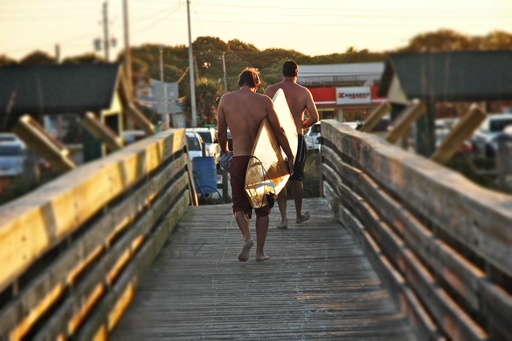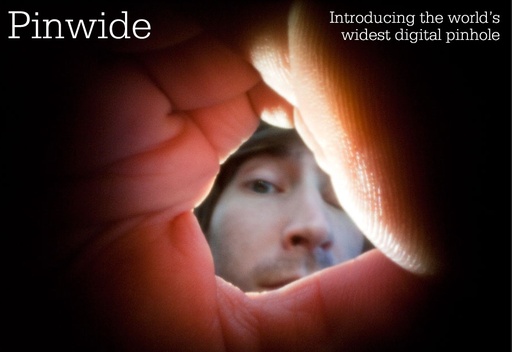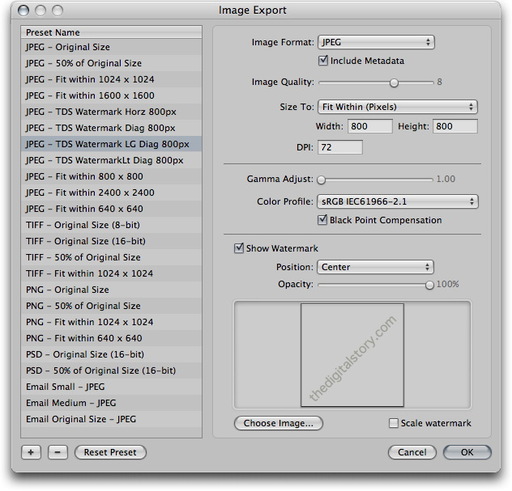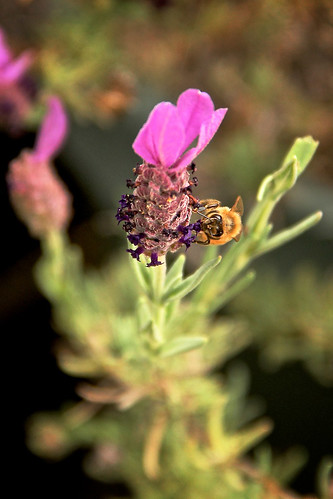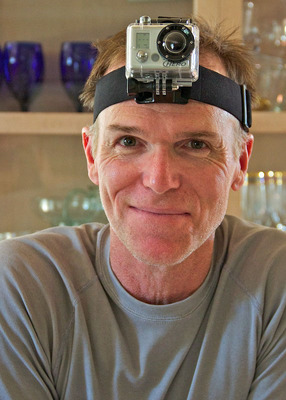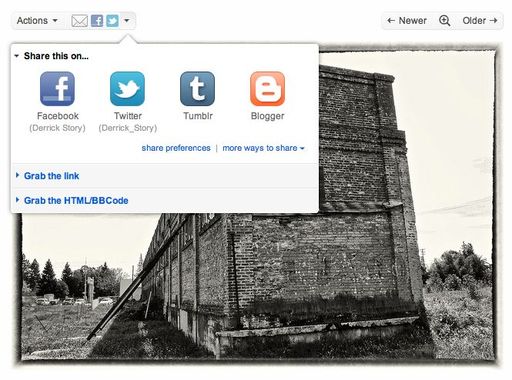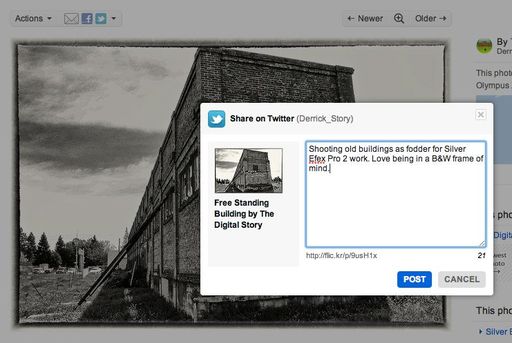April 2011 Archives
The air was muggy outside Whitney Lab, off road 1A1 south of St. Augustine, Florida. But I had a freshly made chicken salad sandwich, and I didn't feel like staying indoors for lunch. So I found myself a flat rock out by the water and opened a bag of salty chips.
Off to my right I detected movement. At first I couldn't see what had caught my eye, but then I noticed a Fiddler Crab making his way back to the safety of his hole in the sand. You know how these things are. Once your sight becomes attuned to the environment, you suddenly see what's really going on around you. One by one I noticed dozens of these little guys with the big right claw.
I finished my sandwich, then changed lenses on the Canon 60D I had in my shoulder bag. I went with the 70-200mm f/2.8 zoom to give me a bit more reach. Not far from where I was sitting, I discovered this flamboyant crab who emerged from his very elegant home complete with rock patio cover. He motioned to me with his large right claw. As long I didn't move too fast, he would stay outside for a visit.
I had forgotten about the humidity. In fact, quite a while had passed before I remembered that I was on lunch break and should get back to work. And it only took me 15 minutes or so to cool back to room temperature once back inside.

I join Frederick Van Johnson and crew for the This Week in Photo show titled, "Viva Las Vegas." Yes, the US Postal Service used an image of the Statue of Liberty from Las Vegas, not New York, for its stamp. We talk about that and much more in this episode that also includes Alex Lindsey and Richard Harrington.
It's a fun show. You might want to tune in.
The Pinwide wide angle pinhole cap for micro four thirds cameras (Olympus PENs and Panasonic G Series) gives photographers the traditional feel of pinhole photography with the flexibility of digital imaging.
Plus you get very wide coverage with the equivalent of a 22mm lens and that exceptional depth of field that comes with pinhole photography. I've ordered mine for $39.95 directly from the site, and I'll post some images once I receive the Pinwide.
Photography is a fantastic part time job. It can help pay for your equipment or supplement your regular income. A strategy I recommend for building your business is to develop multiple revenue streams. In this week's episode, I explain this concept and provide a few examples for you to consider.
Listen to the Podcast
You can also download the podcast here (32 minutes). Or better yet, subscribe to the podcast in iTunes. You can support this podcast by purchasing the TDS iPhone App for only $2.99 from the Apple App Store.
Monthly Photo Assignment
Broken is the April 2011 Photo Assignment. You can read more about how to submit on our Member Participation page. Deadline for entry is April 30, 2011.
The SizzlPix Pick of the Month for the "Loved One" Photo Assignment is Kevin Miller for his shot, "Andrew, a special needs friend, loves his dogs."
TDS Fall 2011 Photography Workshop
We're making plans now for the Fall 2011 TDS Photography Workshop. If you want your name on the reserve list, just drop me a line.
More Ways to Participate
Want to share photos and talk with other members in our virtual camera club? Check out our Flickr Public Group. It's a blast!
Podcast Sponsors
Red River Paper -- Try the $7.99 Sample Kit.
Make Your Photos Sizzle with Color! -- SizzlPix is like High Definition TV for your photography.
Need a New Photo Bag? Check out the Lowepro Specialty Store on The Digital Story and use discount code LP20 to saven 20% at check out.
Technorati Tags:
digital photography, podcast, technique, Technology, The Digital Story, tips
We've been able to apply watermarks in Aperture since the beginning, but the problem is they usually don't look the way we want. Unless you create your watermark with a transparent background, you'll get what looks like a rectangular label instead of the more elegant type without a box.
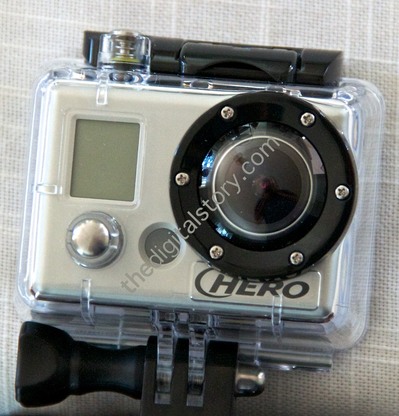 Watermark with transparent background created in Photoshop, then applied in Aperture 3.
Watermark with transparent background created in Photoshop, then applied in Aperture 3.
The procedure for a better watermark is relatively simple. Start in Photoshop. Go to File > New, then choose "Transparent" for the Background Contents popup menu in the dialog box. Click OK. Once you've created the file with a transparent background, use the text tool to type and style your watermark. You may want to shade the text light gray instead of black (even though you do have an opacity slider later on in Aperture for fine tuning). If you want a diagonal watermark, go to Image > Image Rotation > Arbitrary and set the angle you want. Once everything looks good, then Save As Copy in the PNG format. You'll also want to save your master as a PSD file for easy editing at a later date.

Now go to Aperture. Pick the image you want to apply the watermark to, then choose File > Export > Version. In the Export dialog box, choose "Edit" at the bottom of the Export Preset popup menu. Click the "+" icon in the lower left to create a new preset. Set your basic parameters, then check the "Show Watermark" box. Click the "Choose Image" button and navigate to the graphic you created in Photoshop. If you go diagonal, you'll probably want to position it in the center.
Once everything is set up to your liking, click OK, then click Export Versions. You may have to run a few tests to get everything the way you want. Once you do, you can watermark many images at once by batch exporting from Aperture. You can also set up different export presets for watermarks placed in different positions, such as lower left and lower right.
I don't have to watermark often. But when I do, it's nice to have this set up ahead of time.
More Aperture Tips and Techniques
My next Aperture Workshop is May 23, 2011 in Santa Rosa, CA. write me if you're interested in attending.
To learn more about Aperture 3, check out my Aperture 3 Essential Training on Lynda.com. Also, take a look at our Aperture 3 Learning Center. Tons of free content about how to get the most out of Aperture.
onOne Software has borrowed one of Photoshop's most hallowed features, Layers, and created a plug-in for two of our favorite nondestructive photo management applications: Lightroom and Aperture.
Perfect Layers is currently available as a free public preview for Lightroom users. The 1.0 version of the software is due to be released later this year, with added compatibility for Aperture and Adobe Bridge. I've tested this current 0.9 release, and have a brief overview for you.
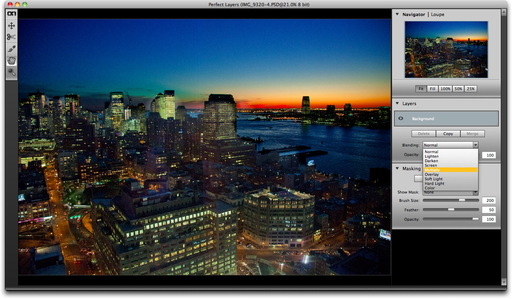 This image started in Perfect Layers, then went to Photoshop. When I opened it back up in Perfect Layers, it had been been flattened.
This image started in Perfect Layers, then went to Photoshop. When I opened it back up in Perfect Layers, it had been been flattened.
Perfect Layers behaves as a typical plug-in. You can access it in Lightroom via File > Plug-in Extras. First I had to enable it via the Plug-in Manager. To do that, I navigated to the Perfect Layers folder that was installed in Applications folder after I downloaded it from the onOne site.
You can start with any file in your Lightroom library: Raw, Jpeg, etc. Perfect Layers creates a separate Photoshop file and opens it in its interface. You don't get something for nothing at this point. I started with a 29 MB Raw file, and ended up with a 160 MB PSD file (for a 2 layer document). Like most plug-ins, I recommend that you only tap it when you really need its functionality. Otherwise, stay within the nondestructive workflow.
You have the essentials of Layers in Photoshop, but certainly not all of the functionalty you'd find in CS5. You have nine blending modes: normal, lighten, darken, screen, multiply, overlay, soft light, hard light, and color. You also have basic masking tools. There are opacity sliders for both blending and masking.
At this point in its development, Perfect Layers doesn't play well with Photoshop CS5. You can open a Perfect Layers document in Photoshop, and have those layers available to you. That's nice. But, in my testing, if you make any changes to the document in Photoshop, you lose your layers upon returning to Perfect Layers. Also, you can't import a Photoshop layered document in to Perfect Layers and use the layers. It comes in flattened.
I'm hoping that this problem is resolved by the time onOne finishes the software. This is in public review now, and my feedback is that I would like layer compatibility between Perfect Layers and Photoshop for final release.
As for using the software, I very much enjoyed the experience. To me, it feels like a more modern version of the Layers interface. I'm sure some Photoshop experts might not like it because they are already comfortable with the legacy tools. But for photographers trying to get their feet wet with layers, I think this is a nice introduction. And it's a handy tool within the Lightroom environment.
Will Perfect Layers be worth the estimated $150 price tag? That depends on the improvements that are added during the public review period. It also depends on your personal workflow. If you use layers often, I think the tools in Photoshop are more robust. But if you're primarily a Lightroom or Aperture user who ocassionally wants to use layers for a particular image, then this plug-in might make sense. It will be easier to judge its value in the coming months.
In addition to showing off your work on Flickr, you can become a museum curator and create galleries of images by other photographers. Each gallery can display up to 18 images, and it's a great way to show others interesting shots that you've discovered. It's a feature that many Flickr users are aware of.
To see how this works, plus more tips, take a look at this movie from my Flickr Essential Training title, and see what you think.
More Training Available
We have many more informative movies available in the lynda.com title, Flickr Essential Training. Stop by and learn how to get the most from your favorite photo sharing application.
Previously on The Digital Story
Using Google to Search Within Flickr
Flickr Updates Share Tools for Facebook, Twitter
Introduction to Flickr Essential Training
I was thrilled to read that Eye-Fi has enabled a direct mode feature to its X2 series of cards. I had read in some of the reviews on the new iPad/iPhone app page that this functionality was difficult to enable. I decided to give it a spin (was going to anyway!).
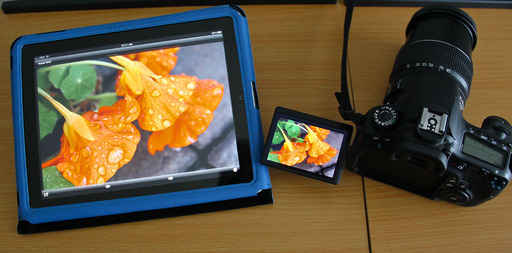 Direct mode transfer with an Eye-Fi Pro X2 card to an iPad. Click on image for larger size. Photo by Derrick Story.
Direct mode transfer with an Eye-Fi Pro X2 card to an iPad. Click on image for larger size. Photo by Derrick Story.
The first thing I had to do was update the Eye-Fi Center software to the latest version. You can do this easily within the app. I then connected my Pro X2 card to the MacBook Air via the Eye-Fi card reader. I could use the built-in SD card slot on the Air, but I've learned that Eye-Fi cards like their own reader if one is available. Things just work better.
I then was able to update the firmware on the X2 card. This took about 30 seconds. Once I did that I could go to settings in Eye-Fi Center and enable Direct Mode.
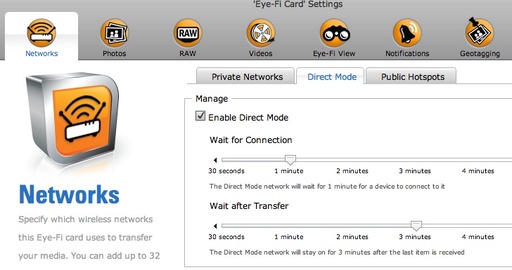 Enabling Direct Mode in the Eye-Fi Center software.
Enabling Direct Mode in the Eye-Fi Center software.
After I hit Save, I checked my other settings, then ejected the card. I put the Pro X2 in the Canon 60D, and took a couple of shots. My iPad was ready to go. I had downloaded the latest Eye-Fi software from the iTunes App Store. So all I had to do was enable Direct Mode on the iPad app, and then I could try a transfer. I picked one of the images on the 60D, protected it (I have selective upload that uses the protect function to determine what gets uploaded), and within 30 seconds, the image appeared on the iPad.
So my advice is to explore all of the settings in the Eye-Fi Center and in the Eye-Fi iPad/iPhone app to make sure you have all the Ts crossed. I'm going to continue to test this setup in different environments. I'll report anything new I find out. But so far, so good!
This project recorded with an Olympus XZ-1 and Canon T3i, both shot at 720p. The studio demo footage employed the Rode VideoMic Pro plugged into the external mic jack of the T3i. The SF footage was captured with the XZ-1 without any accessories.
The Lowepro CompuDay Photo 150($65) is a messenger bag designed specifically for photographers. It has a clever camera compartment that allows access on-the-go to your DSLR, or that can be compressed when not in use to reclaim space in the bag.
I have a nice demo on the CompuDay Photo 150, then I take it on a business appointment in San Francisco to meet with pro shooter, Mikkel Aaland.
I really enjoy using the Lowepro CompuDay Photo 150for this type of work. I can carry up to a 17" laptop, DSLR, iPad, and misc gear, while not attracting attention to myself. Perfect for the urban environment.
Thanks to Mikkel Aaland for his help with this project.
More Lowepro Gear Videos
Lowepro Versapack 200 AW: Great for Biking Too
Stylish, Compact Bags for ILC Cameras
"10 Tips for Packing Your Camera Bag" - Digital Photography Podcast 265
Fashion Shooter Vered Koshlano Sports Tech VestExposure, color, and composition... the basics of photography. In this week's episode, we're going to review how the camera sees light, and how you can tame it to see the world the way your eyes do.
Listen to the Podcast
You can also download the podcast here (34 minutes). Or better yet, subscribe to the podcast in iTunes. You can support this podcast by purchasing the TDS iPhone App for only $2.99 from the Apple App Store.
Monthly Photo Assignment
Broken is the April 2011 Photo Assignment. You can read more about how to submit on our Member Participation page. Deadline for entry is April 30, 2011.
The SizzlPix Pick of the Month for the "Loved One" Photo Assignment is Kevin Miller for his shot, "Andrew, a special needs friend, loves his dogs."
TDS Fall 2011 Photography Workshop
We're making plans now for the Fall 2011 TDS Photography Workshop. If you want your name on the reserve list, just drop me a line.
More Ways to Participate
Want to share photos and talk with other members in our virtual camera club? Check out our Flickr Public Group. It's a blast!
Podcast Sponsors
Red River Paper -- Try the $7.99 Sample Kit.
Make Your Photos Sizzle with Color! -- SizzlPix is like High Definition TV for your photography.
Need a New Photo Bag? Check out the Lowepro Specialty Store on The Digital Story and use discount code LP20 to saven 20% at check out.
Technorati Tags:
digital photography, podcast, technique, Technology, The Digital Story, tips
Canon offers the Rebel T3i with the EF-S 18-135mm IS Zoomas a step-up to the shorter 18-55mm lens (it's an actual kit at a special price). Aside from the extended telephoto range, is it worth spending an extra $250 for this upgrade?
If you want a single lens that ranges from an effective 29mm to 216mm range, non-rotating front objective lens (better for polarizing filters), and metal lens mount, then you might be tempted by this upgrade. But if you're looking for a bump in image quality over the 18-55mm kit lens, then hang on to your wallet: the two lenses are about the same in terms of sharpness and distortion control. Now that isn't necessarily bad news, since both the 18-55mm and 18-135mm are solid performers.
"Bee on Lavender" photographed with a Rebel T3i and 18-135mm EF-S zoom at 135mm wide open (f/5.6). ISO 500, 1/250th second. The Jpeg image was first processed in Aperture 3, with a bit of additional sharpening in Photoshop CS5. Click on image for larger version. Photo by Derrick Story.
I've been testing the the 18-135mm on a Canon EOS Rebel T3i, and have enjoyed using it. Even though it's a bigger lens and does weigh more than the 18-55mm, it feels good on the Rebel body. And I liked not having to change lenses as often as I had previously with the shorter kit lens.
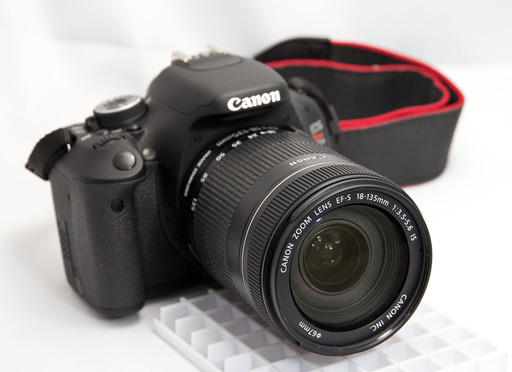 Canon EF-S 18-135mm IS Zoom Lens mounted on a EOS Rebel T3i. Click on image for larger size. Photo by Derrick Story.
Canon EF-S 18-135mm IS Zoom Lens mounted on a EOS Rebel T3i. Click on image for larger size. Photo by Derrick Story.
If you want to go to the next level of image quality, however, I recommend the EF-S 15-85mm zoom that has a wider angle of view, quiet USM focusing motor, better build, and better sharpness, especially on the corners. However, this zoom costs about 3X more ($795) because it isn't a kit option, and doesn't have the same reach as the 18-135mm.
So, for essentially $250 (when purchased as part of a kit), the 18-135mm is a very good deal. (Keep in mind if you buy the 18-135mm separately, it's about $650.) And after shooting with it for a few weeks, I would have a hard time going back to the shorter 18-55mm kit zoom. I'd consider the upgrade if you're looking at the new Rebels.
Until recently, I had considered the Lowepro Versapack 200 AW as primarily a hiking backpack. But I've discovered it's terrific for biking too. Here's a short movie on how I pack it for two-wheeled adventures.
I've had photographers tell me that they would patiently wait -- sometimes for an hour -- for people to clear out of a scene so they could photograph it. This becomes a bigger challenge once school lets out and family vacation season begins.
But, do people really ruin your scenic shots? Take a look at the comparison below, captured at Ledson Winery in Sonoma County. (Cast you vote for which image you like best in the comments section of this article.)
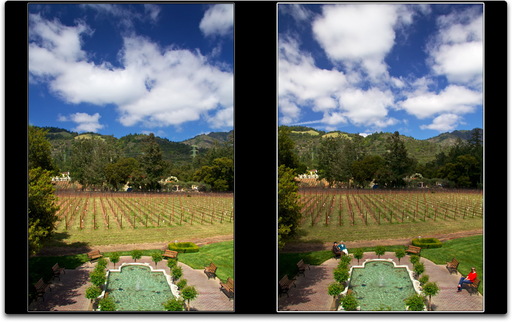 Do people really ruin this scenic shot? Personally, I don't think so. Click on image for larger version. Photos by Derrick Story.
Do people really ruin this scenic shot? Personally, I don't think so. Click on image for larger version. Photos by Derrick Story.
Sometimes people add visual interest to a composition. Plus they can help with sense of scale. Yet it's true, there are those situations where they are an annoying distractions no matter how you compose the scene.
So the answer for me is to try to capture the photo both ways, then decide later which version I like best. And if it's not possible to eliminate those pesky humans, then I wait for a decisive moment where they're doing something interesting.
As for the photo above, which way to you vote? People... or not?
"I've been trying to capture a rocket launch from Vandenberg for almost a year now," writes Thomas Emmerich. "I finally got my chance tonight, and it came out pretty good for my first try. I almost missed it by mis-judging the launch angle from Ventura (CA)."
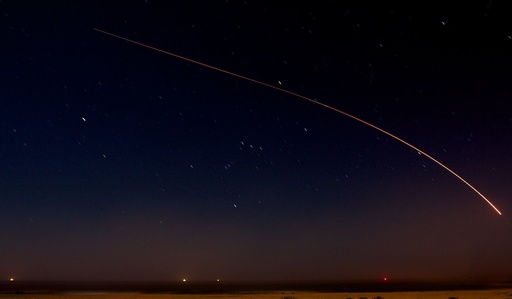 "Rocket Launch" - Grab Shot 213 by Thomas Emmerich. Click on image for larger version.
"Rocket Launch" - Grab Shot 213 by Thomas Emmerich. Click on image for larger version.
"I had to move the camera at the last moment and missed the first few seconds of the launch. The hard part about taking these shots is you can't see anything in the viewfinder while setting up, and then once you open the shutter, you can't tell where the rocket is in the frame or if its even in the frame. There are no second chances."
"I used my Canon T2i with a borrowed Canon 17-40mm F4L lens. Settings were F/8 and bulb mode with a infrared remote trigger to start and stop the exposure of 95 seconds. ISO 400. I found tips on photographing rockets at night by doing a Google search for 'Photograph Vandenberg Rocket Launch'".
There was quite a bit of water vapor in the air, which was made visible by the long exposure and the parking lot lights behind me.
This is our 213th Grab Shot! Wow. If you want to review the collection that began back in 2006, go to our Grab Shots page.
If you have a candid you'd like to share, take a look at our Submissions page, then send us your Grab Shot. We'll try to get it published for you on The Digital Story.
And you can view more images from our virtual camera club in the Member Photo Gallery.
The Digital Story Podcast App is the best way to stream or download weekly TDS podcast episodes. No more syncing your iPhone, iPod Touch, iPad, or even your Android phone just to get a podcast. And the best part is, The Digital Story Podcast App is your way to help support this show. Download it today!
One of my favorite features in Adobe Camera Raw 6.3 (part of Photoshop CS5) is the Lens Correction tool. It's handy for correcting images from your glass that records a tad too much distortion, chromatic aberration, or vignetting. But I also like to use it to evaluate zooms that I'm testing for reviews or considering for purchase.
For most common zooms, all you have to do is open the file in Adobe Camera Raw, click on the Lens Correction tab, then check the box next to Enable Lens Profile Corrections. By checking and unchecking the box, you have another way to gauge the performance of the optics on your camera.
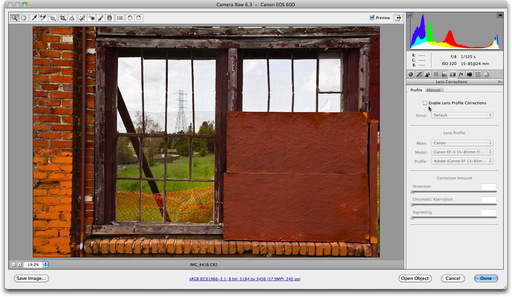 Adobe Camera Raw Lens Correction Off. Click on image for full size version.
Adobe Camera Raw Lens Correction Off. Click on image for full size version.
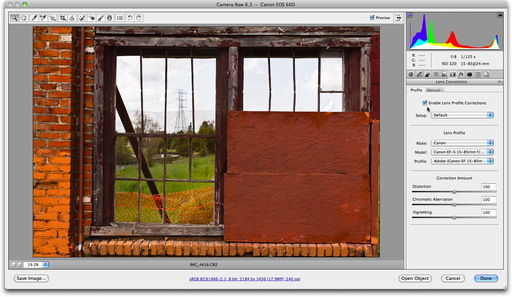 Adobe Camera Raw Lens Correction On. Click on image for full size version.
Adobe Camera Raw Lens Correction On. Click on image for full size version.
I recently field tested the Canon EF-S 15-85mm f/3.5-5.6 IS USM, and loved the shots it produced in the field. So I thought I'd take a look at how it fared in ACR. As you can see, there was some distorition, but nothing that caused my affection to wane.
Lightroom 3 has this same technology available in the Develop module. Look for Lens Corrections in the right-side pane.
In either application, this is a useful tool for correcting images and evaluating your glass.
It happens a thousand times a day: a group of people want to commerate a moment together, and you're the person standing there with a camera. Yes, it's time for the classic photo opp -- the group shot.
For those situations, I have some great tips to help you improve those images. I've just released Photo Assignment: Group Shots on lynda.com to help you with exactly that.
I start with an equipment overview, including some of the latest tools such as Rogue FlashBenders. We then go on location to a historic theater in downtown Ventura CA to put our theories to the test. I photograph couples and small groups inside and out the brick building. I wrap up the tutorial by returning to the computer to review our results and share more tips and techniques.
The entire training runs just a bit over 30 minutes, yet covers plenty of ground. I'm confident that the next time you've got group shots on the assignment list, you'll be better prepared after watching this training.
More Online Photography Training at Your Fingertips
The Group Shots title is part of an ongoing series I have on lynda.com. You may also want to take a look at the Off Camera Flash title. I show you all sorts of helpful lighting techniques that are especially good for portraits.
As high-end compact cameras became, well, more compact, their optical viewfinders fell by the wayside. For me, this wasn't such a terrible thing since they were usually awful anyway, often only showing a fraction of the photo you were actually recording. That being said, wouldn't it be nice to have something other than the LCD screen for composing with these little photographic gems?
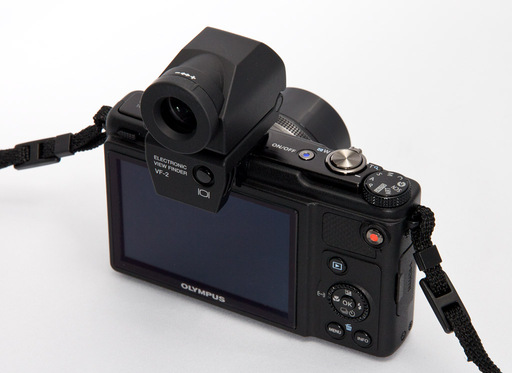 Olympus XZ-1 with VF-2 Electronic Viewfinder. Click on image for larger version. Photo by Derrick Story.
Olympus XZ-1 with VF-2 Electronic Viewfinder. Click on image for larger version. Photo by Derrick Story.
The engineers at Olympus seem to think so too. For their latest well-heeled compact, the XZ-1 with f/1.8 zoom, they included an accessory shoe that accommodates the VF-2 Electronic Viewfinder (that also works on most of the PEN cameras.)
The VF-2 slides into the accessory port and provides an accurate view of both image and camera controls. You can switch back and forth between the viewfinder and the LCD by pressing the control button on the back of the viewfinder. The VF-2 is hinged, so you can angle up to 90 degrees providing more flexibility in how you hold the camera when you take pictures. There's also a diopter ring so you can adjust its clarity to your eyesight.As you can image, this accessory is a blessing when working in bright sunlight, which can make composition on an LCD difficult at best. But I use the VF-2 for all types of shooting. I find it easier to concentrate on my composition with the device, similar to the experience of composing through a DSLR.
What's amazing, however, is how small and light the entire package is. For photographers on the go, or just anyone who loves to travel light, the Olympus XZ-1 plus VF-2 Electronic Viewfinder does make compact photography more pleasurable than ever. The only downside? The price for this combo will also lighten your wallet.
The Olympus XZ-1 is running around $499 plus another $249 for the VF-2 Electronic Viewfinder. So don't try it unless you have the budget to spend. Because if you do, you'll certainly be hooked.
More Articles about the Olympus XZ-1
Olympus XZ-1 ISO Test 100-3200
"Olympus XZ-1 ISO Smackdown" - Digital Photography Podcast 267
The Canon EOS Rebel T3i(600D) is not your father's entry level Rebel. The latest consumer DSLR from Canon features a 3-inch articulated LCD, 18 MPs of resolution, full HD movie recording, and more. And now you can get the 18-135mm EF-S zoom as the kit lens. It's quite a package. And I've been shooting with one for weeks now, and have lots to report about the T3i, then how it stacks up against the 60D. Plus some discussion on should you consider the 5D Mark II now, or wait and see what happens later this year.
Listen to the Podcast
You can also download the podcast here (31 minutes). Or better yet, subscribe to the podcast in iTunes. You can support this podcast by purchasing the TDS iPhone App for only $2.99 from the Apple App Store.
Monthly Photo Assignment
Broken is the April 2011 Photo Assignment. You can read more about how to submit on our Member Participation page. Deadline for entry is April 30, 2011.
The SizzlPix Pick of the Month for the "Loved One" Photo Assignment is Kevin Miller for his shot, "Andrew, a special needs friend, loves his dogs."
TDS Fall 2011 Photography Workshop
We're making plans now for the Fall 2011 TDS Photography Workshop. If you want your name on the reserve list, just drop me a line.
More Ways to Participate
Want to share photos and talk with other members in our virtual camera club? Check out our Flickr Public Group. It's a blast!
Podcast Sponsors
Red River Paper -- Try the $7.99 Sample Kit.
Make Your Photos Sizzle with Color! -- SizzlPix is like High Definition TV for your photography.
Need a New Photo Bag? Check out the Lowepro Specialty Store on The Digital Story and use discount code LP20 to saven 20% at check out.
Technorati Tags:
digital photography, podcast, technique, Technology, The Digital Story, tips
Both the Canon EOS 60Dand the Canon EOS Rebel T3i
(600D) include the new "Soft Focus" Creative Filter that allows you to apply in-camera effects after you've captured the image. The adjusted shots are saved as separate files so you have both the original and the altered images.
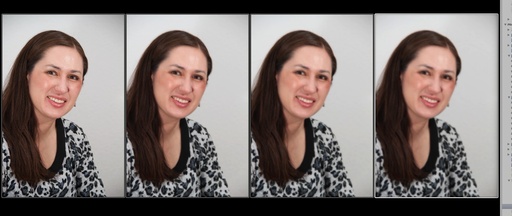 Image on the left is original photo captured with Canon T3i and 18-135mm zoom. Next 3 images employ varying degrees of the "Soft Focus" Creative filter available in the T3i and 60D. Click on image for larger version.
Image on the left is original photo captured with Canon T3i and 18-135mm zoom. Next 3 images employ varying degrees of the "Soft Focus" Creative filter available in the T3i and 60D. Click on image for larger version.
I was curious to see if the Soft Focus effect could be used for portraits. You have some control over it because you can apply three different strengths of the filter (true for both the T3i and the 60D). In these shots, the original image is on the far left, then three different strengths of the Creative Filter follow from left to right. No editing was applied to these photos. This is how they were downloaded from the T3i.
As you can see, this isn't really an intelligent filter. I mean that in the sense that it does not have the ability to preserve detail in areas that are not continuous toned. The softening is applied to the entire image. The effect would be nice on the skin and the background, but it doesn't work on the eyes, or even the hair.
This filter could be useful for certain landscapes and other creative pursuits, but unfortunately it's not good for portraits. The defocused eyes in particular are annoying.
So, I'm going to stick with my normal portrait technique when shooting with these cameras.
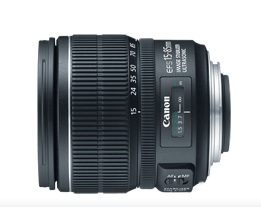
When buying a new APS-C DSLR, it's a good idea to get a kit lens with it. They're great for resale value and are usually quite decent for the price. But when it's time to upgrade your "everyday zoom," what are your best options?
For Canon 60D and 7D owners, I recommend the Canon EF-S 15-85mm f/3.5-5.6 IS USM zoom. Here are the key reasons why I favor this zoom over the other models in the EF-S line up.
- Wide 24mm equivalent, yet zooms out to 135mm equivalent
- USM makes for quiet, fast focusing
- 4 stops image stabilization
- Very sharp at all focal lengths
- Relatively compact for such a wide zoom range
You may have noticed that I didn't specify this lens for the Canon Rebel T2i or T3i. That's only because it feels a bit heavy on those camera bodies. I think the zoom has better balance on the 50D, 60D, and 7D models. It's not a particularly light lens, weighing in about 1.25 pounds (575 g). But is is relatively short at 3.4" (8.64 cm). It would certainly provide great images on a Rebel, just try it first to make sure it's comfortable to hold.
On the downside, it isn't a very fast zoom. Some of this is offset by the 4 stop image stabilizer. You do have f/3.5 at the widest setting, but as soon as you begin to zoom it works its way up to f/4, then f/5.6 at the tele end. I usually carry the Canon 85mm f/1.8 in my 60D kit, just in case I need a fast aperture at the short telephoto focal length.
I also noticed some vignetting at the wide and tele focal lengths. For those situations where you notice it, it's easily controlled by using lens corrections in Lightroom and Adobe Camera Raw, or devignette in Aperture.
Those nits aside, when it comes to performance, this lens outshines the non-USM models (such as the 18-135mm and 18-200mm) and has a broader zoom range than the 17-55mm or the 17-85mm alternatives. At $795, it is an investment in your DSLR system. But for my everyday lens that stays on the 60D, I feel the same way about the EF-S 15-85mm f/3.5-5.6 IS USM on that body, as I do about the 24-105mm L on the Canon 5D Mark II... confident.
"I started out Sunday evening and took a drive until I found some water," writes Keith Burrows. At just the right moment, I stopped and shot this scene. It's a typical south Florida sunset, which is why I live here!"
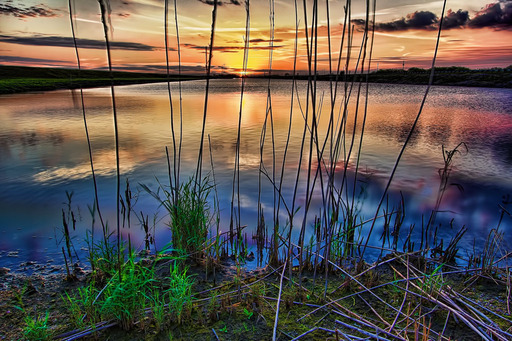 "Reflections of a Beautiful Evening" by Keith Burrows. Click on image for larger version.
"Reflections of a Beautiful Evening" by Keith Burrows. Click on image for larger version.
Keith recorded this beautiful image with his Canon 60D and a 10-22mm lens set wide open. It's a 3-shot HDR, initially processed in Aperture 3 then finished with HDR PRO by Nik.
This is our 212th Grab Shot! Wow. If you want to review the collection that began back in 2006, go to our Grab Shots page.
If you have a candid you'd like to share, take a look at our Submissions page, then send us your Grab Shot. We'll try to get it published for you on The Digital Story.
And you can view more images from our virtual camera club in the Member Photo Gallery.
The Digital Story Podcast App is the best way to stream or download weekly TDS podcast episodes. No more syncing your iPhone, iPod Touch, iPad, or even your Android phone just to get a podcast. And the best part is, The Digital Story Podcast App is your way to help support this show. Download it today!
Even though the Olympus PEN E-PL2has a pop-up flash, you're not stuck with it solely for advanced lighting techniques. You can slide an external flash in the hot shoe, or better yet, let the E-PL2 control RC-capable Olympus strobes that aren't even mounted on the camera. Yes, off-camera flash is possible with the E-PL2.
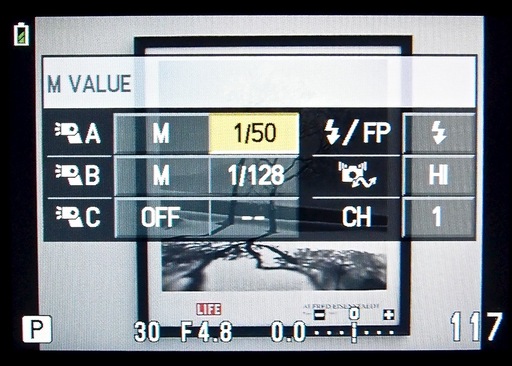 Off-camera flash controls via the menu system on the Olympus E-PL2.
Off-camera flash controls via the menu system on the Olympus E-PL2.
I've been testing this functionality with the FL-50R full size flashand the FL-36R compact flash
with the E-PL2 and the XZ-1. The FL-36R is lighter, only uses 2 AA batteries, and sits on the smaller cameras better than the heavier FL-50R that uses 4 AA batteries. I've already done single flash portraits with the FL-36R, so I wanted to try a 2-flash set-up. I decided to tackle a most difficult subject: artwork behind glass. Talk about unforgiving flash work.
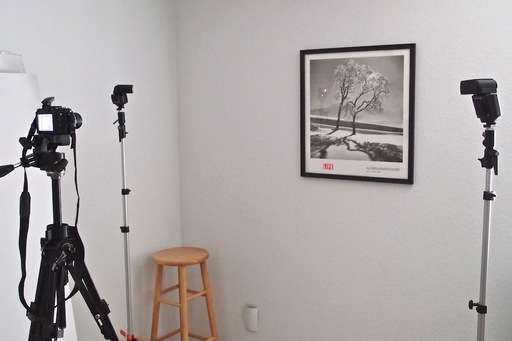 A framed Alfred Eisenstaedt poster behind glass ready to be photographed with two flashes off camera.
A framed Alfred Eisenstaedt poster behind glass ready to be photographed with two flashes off camera.
I put the flashes in "RC mode" and positioned them equal distance and at similar angles from the framed print, then put the camera on the tripod. I enabled RC flash mode on the E-PL2 so the camera could communicate with both units. Since the FL-50R is more powerful than the FL-36R, I decided to go with manual exposure for the flashes, setting the FL-50R at 1/128 (Group B) and the FL-36R at 1/50 (Group A). This gave me relatively even flash output from both sides.
But to make this all work, I had to enable the pop-up flash on the E-PL2. This was really the only fly in the ointment. Even thought the pop-up unit isn't part of the exposure, the flash does have to fire to trigger the two external units. This caused a reflection in the glass. And there was no way to turn off the pop-up and still trigger the external strobes. When your subject isn't close to the camera, or reflective, this shouldn't be a problem. But it presented a challenge for me with this assignment.
I decided to hold my hand in front of the pop-up so it would not shine directly in to the glass, but could still trigger the external units. This worked relatively well. You can examine the image below. It isn't perfect, but it's not a bad photo of glass-covered art work.
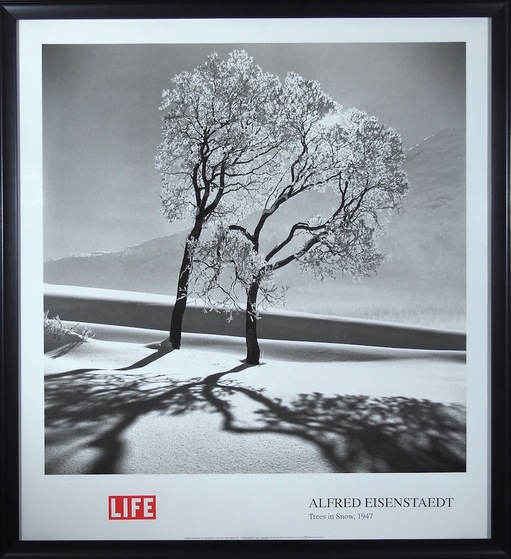 Not a perfect reproduction, but much better than I could have done with just a single on-camera flash.
Not a perfect reproduction, but much better than I could have done with just a single on-camera flash.
The Bottom Line
Even though it isn't as powerful, I like the Olympus FL-36R flash($219) as both a shoe mount and an off-camera flash for the Olympus E-PL2 and XZ-1. If you want to set up more sophisticated lighting schemes, you can add a second FL-36R or even the more powerful FL-50R and control both units from the camera. The only real downside is that the built-in flash does have to fire to trigger the off-camera units. So, there will be situations when you have to diffuse that light so it doesn't influence the main subject.
More Off Camera Flash Tutorials
If you want to learn more about getting pro results from a single flash, be sure to check out my Off Camera Flash title on Lynda.com. I show you all sorts of helpful lighting techniques that are especially good for portraits.
Off Camera Flash - Basic Techniques for Pro Results
Light Modifiers for Off Camera Flash
Off Camera Flash - The Single Light Portrait
"More Off Camera Flash" - Digital Photography Podcast 233
In my Macworld review of the Samsung NX 100 ILC camera, I say that it's an innovative camera, but not always a practical one. Its large APS-C sensor in a relatively compact body is alluring. But lack of lens options and no pop-up flash put it behind the competition from Sony, Olympus, and Panasonic.
So here are my Pros and Cons for the NX100:
Pros
- iFunction Ring handy for quick settings
- "Smart" exposure mode is fun and relatively useful
- Great image quality from ISO 100-400; good quality up to1600
- Large APS-C sensor in a slim camera body
- Clear menu system that's generally easy to navigate
- Competitive pricing for a CILC
Cons
- No pop-up flash
- Slippery grip
- Noisy lens focusing
- Lacks built-in IS with kit lens
- Effective 30mm-75mm zoom range of kit lens not wide enough
- Lacks dedicated video recording button
The bottom line is, I don't recommend the Samsung NX 100, considering that I like the micro four/thirds options from Olympus and Panasonic better, not to mention the pretty nice Sony NEX series.
Black & White photography is beautiful, artistic, and easier than ever to create dynamic images. In this week's podcast, I first talk about Silver Efex Pro 2 for converting color photos, I then get into a a couple techniques that you can do without any additional software. Either way, it's a great way to spice up your photography.
You might also want to read my Silver Efex Pro 2 review where I describe the simple workflow I use with that application.
I've also published a gallery of B&W images for your reviewing pleasure.
Listen to the Podcast
You can also download the podcast here (31 minutes). Or better yet, subscribe to the podcast in iTunes. You can support this podcast by purchasing the TDS iPhone App for only $2.99 from the Apple App Store.
Monthly Photo Assignment
Broken is the April 2011 Photo Assignment. You can read more about how to submit on our Member Participation page. Deadline for entry is April 30, 2011.
TDS Fall 2011 Photography Workshop
We're making plans now for the Fall 2011 TDS Photography Workshop. If you want your name on the reserve list, just drop me a line.
More Ways to Participate
Want to share photos and talk with other members in our virtual camera club? Check out our Flickr Public Group. It's a blast!
Podcast Sponsors
Red River Paper -- Try the $7.99 Sample Kit.
Make Your Photos Sizzle with Color! -- SizzlPix is like High Definition TV for your photography.
Need a New Photo Bag? Check out the Lowepro Specialty Store on The Digital Story and use discount code LP20 to saven 20% at check out.
Technorati Tags:
digital photography, podcast, technique, Technology, The Digital Story, tips
If you want to show people what you've experienced on a bike, surfboard, skis, or just rambling down a hiking trail, then you should check out the GoPro HD HERO Camera($299) that provides an amazing POV experience for your audience.
Operation couldn't be simpler. Just mount the camera on your helmet or anywhere else that seems appropriate, choose the resolution and frame rate you want (it records up to full HD at 30 fps with audio), start the camera, and begin your adventure. The HD Hero records to a standard SD card in H.264 format that can be played on a Mac or Windows computer.
I had no problem dumping the video files into iMovie and producing this YouTube presentation of a ride that Pat and I took together (that's Pat above modeling the HD Hero so you can see what it looks like in its protective housing).
I was very impressed with the footage that we captured with this little device. Some of its feature highlights include:
- Professional-grade full HD video up to 1080p
- 60 frames per second option in 720p and WVGA resolutions provides slow motion playback
- Videos can be easily edited with iMovie or Windows Movie Maker
- Industry's widest angle (170º) and sharpest lens captures more of the scene
- Includes easy to apply mounts for attaching camera to virtually all helmets
With the weather finally warming up here in Northern California, who knows what escapades we'll be able to record this Spring.
The first place I send my photos online is to the Digital Story Flickr site. But I have to admit, I haven't been sharing those images on Twitter because things weren't wired together quite right. That's changed now.
In a recent post from the Flickr blog titled, Upload once, share everywhere, they show off their new set of social networking tools. They're quite nice. Take a look at the toolbar up by the Actions menu. Any accounts that you've connected to in your preferences will be available there. I tested by sharing a picture via Twitter.
I clicked on the Twitter icon, wrote the text, and hit "Post." When my Twitter followers clicked on the link in my Tweet, they went directly to the Flickr photo page. Works great, and it's very easy to use. You can do the same for Facebook, Tumblr, Blogger, Wordpress, and more. As a result, I'll be sharing more images on my Twitter and Facebook pages.
Flickr Training Available
We have lots of informative movies available in the lynda.com title, Flickr Essential Training. Stop by and learn how to get the most from your favorite photo sharing application.
Previously on The Digital Story
Using Google to Search Within Flickr
Introduction to Flickr Essential Training
Flickr has terrific search tools, but some folks don't realize that they can also tap the power of Google to find images within the Flickr universe. In this short movie (from my Flickr Essential Training title), I show you how to set up Google for high-powered photo searches.
More Training Available
We have many more informative movies available in the lynda.com title, Flickr Essential Training. Stop by and learn how to get the most from your favorite photo sharing application.
Previously on The Digital Story
Introduction to Flickr Essential Training
